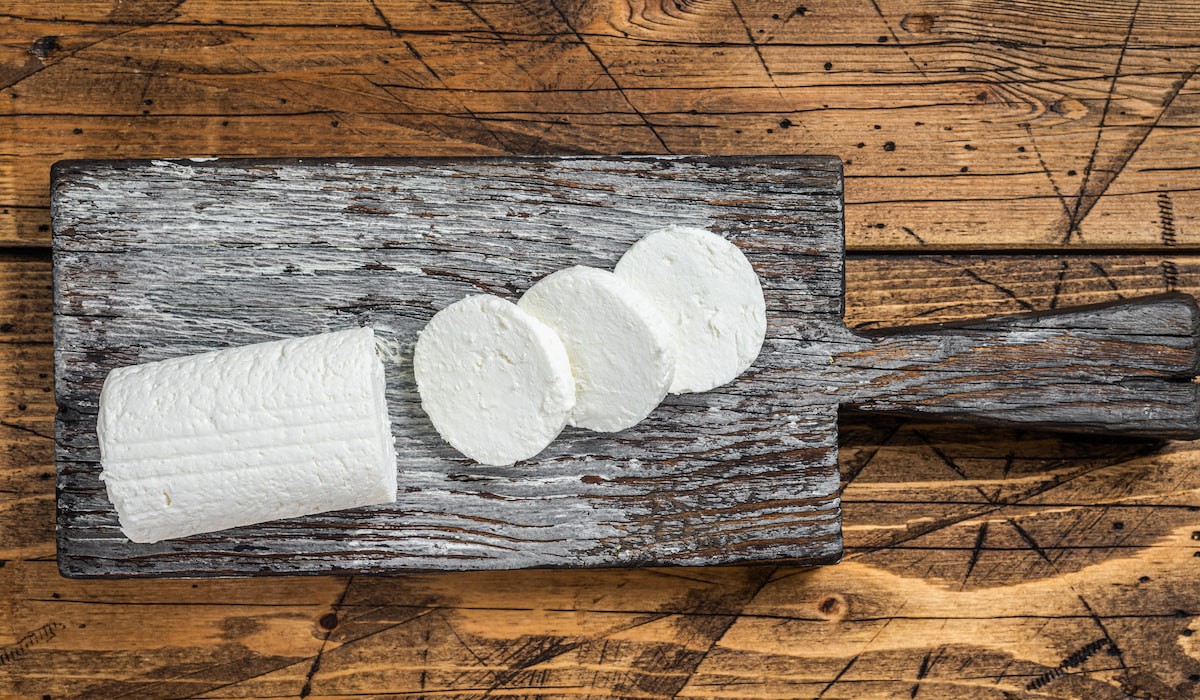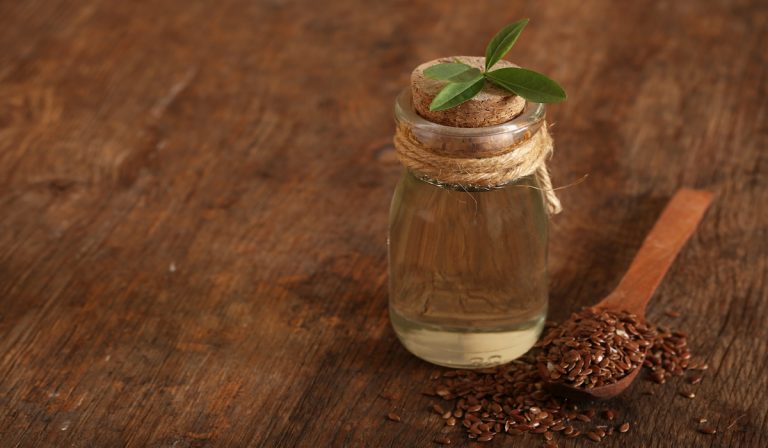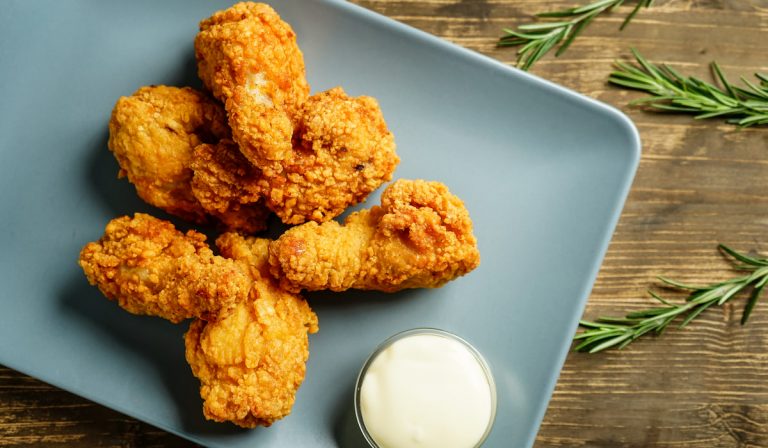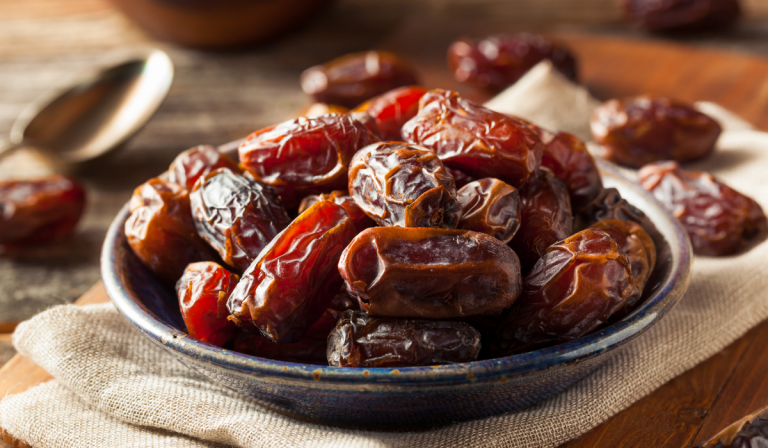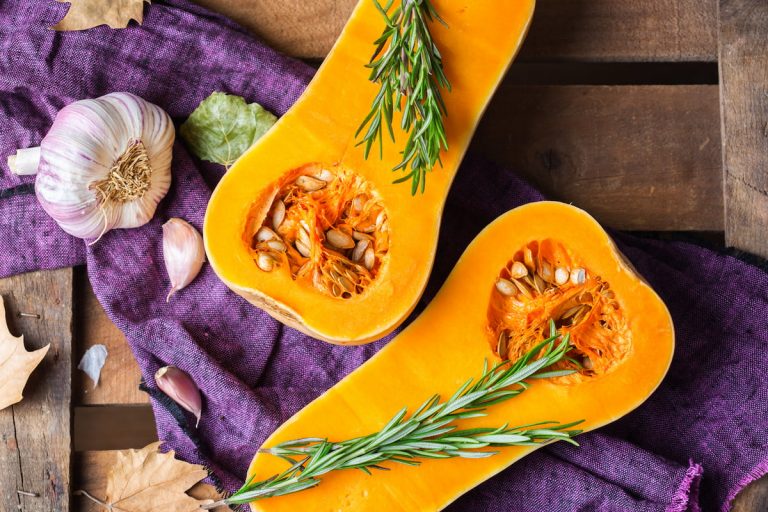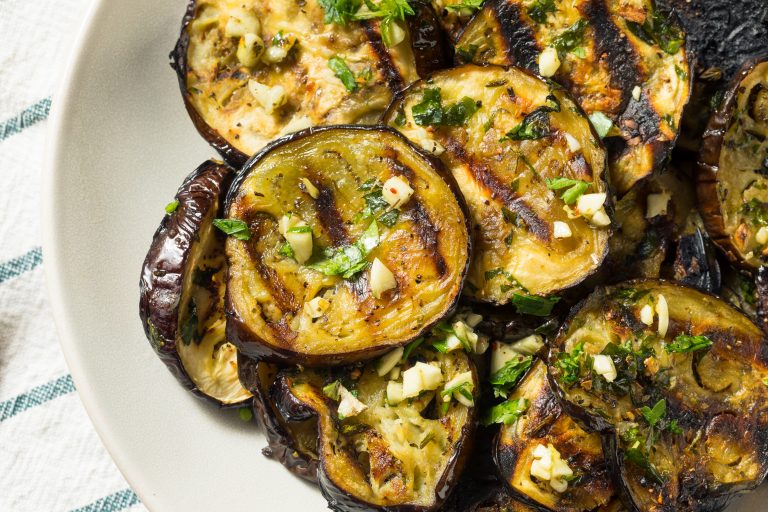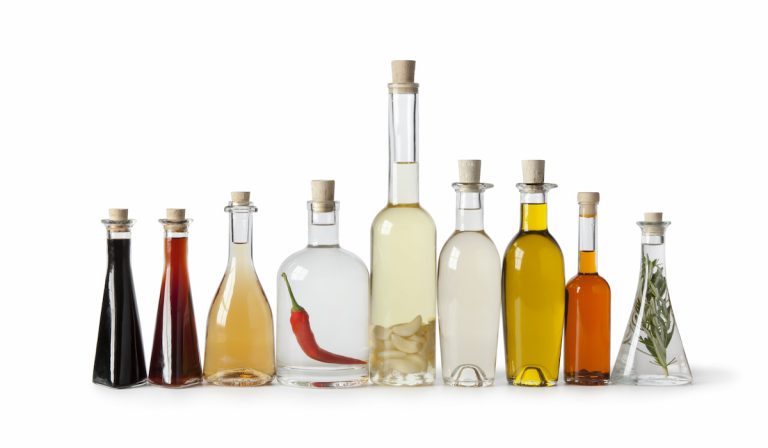Is Goat Cheese Paleo? (Is It Different Than Regular Cheese?)
The paleo diet is based on the foods available to hunter-gatherers from the Stone Age. Those people roamed the earth and ate whatever they could find. And it’s believed that dairy wasn’t a part of their diet.
So, is goat cheese paleo?
Goat cheese is in a gray area when it comes to paleo. At one end of the spectrum, it’s not paleo because it’s a dairy product. On the other end, it’s not processed food and can be made paleo-friendly.
Whether goat cheese is paleo depends on how you define paleo. If you strictly follow the paleo diet, then goat cheese is not paleo. However, if you’re willing to be flexible and make some effort to find the right goat cheese, it can be a part of the paleo diet.
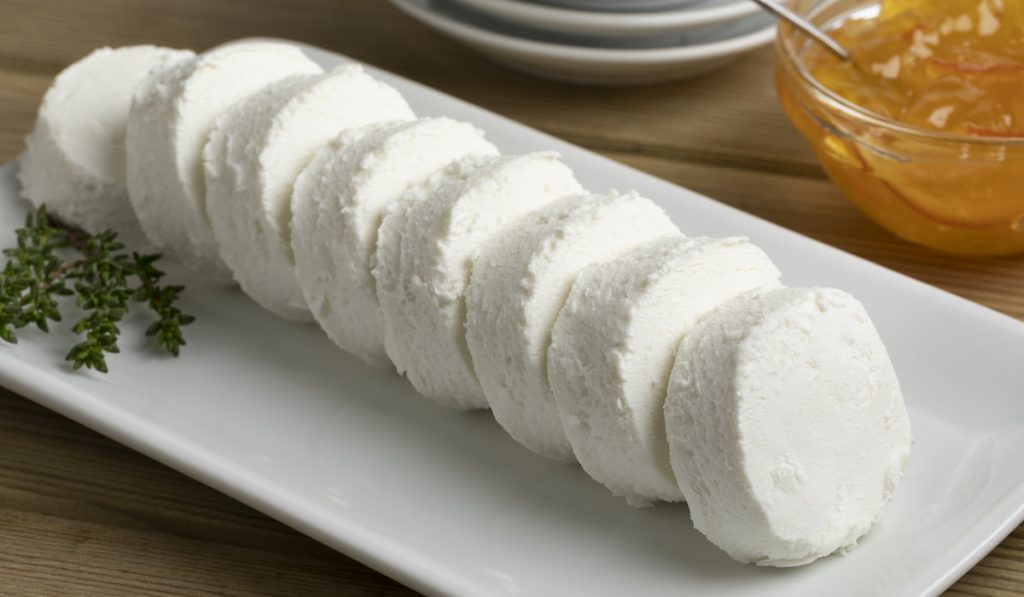
Let’s explore more about goat cheese and whether or not it’s paleo.
What Is Goat Cheese?
Goat cheese is a soft, crumbly cheese made from goat’s milk. Its distinguishing feature is its tangy, slightly acidic flavor, but you can find it in various flavors depending on how it’s made.
Goat cheese is often used in salads, on pizzas, or as a spread.
Mediterranean and Middle Eastern cultures have been making goat cheese for centuries—it’s still popular there today.
France has its own version of goat cheese, called “chèvre.” It’s an aged goat cheese that’s firmer in texture and has a more intense flavor.
Spain, Portugal, Italy, Greece, Turkey, and Morocco have their own takes on goat cheese.

Goat Cheese vs. Cow Cheese
While goat and cow cheeses are both made from milk, some key differences exist.
- Goat milk is naturally lower in fat than cow milk, and the fat molecules are short-chain and medium-chain fatty acids. Although goat cheese has similar fat content to cow cheese, its fat is easier to digest.
- Goat cheese is also lower in lactose than cow cheese. Lactose is a milk sugar that some people have trouble digesting. This means paleo followers who are also lactose intolerant may be able to eat goat cheese but not cow cheese.
- Another difference is the low amount of casein in goat cheese. Casein is a protein directly linked to type II diabetes. Goat cheese contains some casein, but the variant A2 found in goat cheese is different than A1 found in cow cheese and is less likely to cause these health problems.
- Goat cheese is also low in overall calories, so it’s often promoted as a healthy alternative to cow cheese. If you’re following the paleo diet to lose weight, goat cheese might be an excellent alternative for you.
- With all these reduced risk factors, you also get lots of the good stuff. Goat cheese is rich in vitamins A, B, and C. It also has more calcium than cow cheese. You also get some trace elements like magnesium, copper, and zinc.
When you source goat cheese from organic grass-fed goats, all these benefits are even more amplified.
Grass-fed goats aren’t given growth hormones or antibiotics. They graze on nutrient-rich grasses, and those nutrients are passed on to the cheese.
This means grass-fed goat cheese is higher in omega-6 fatty acids, which are anti-inflammatory.
Grass-fed goat cheese is also higher in conjugated linoleic acid or CLA. CLA is associated with several health benefits, like reducing body fat and cancer risks.
So, overall, goat cheese can fill a lot of the nutrient gaps in your diet, especially if you’re not getting enough paleo friendly foods.
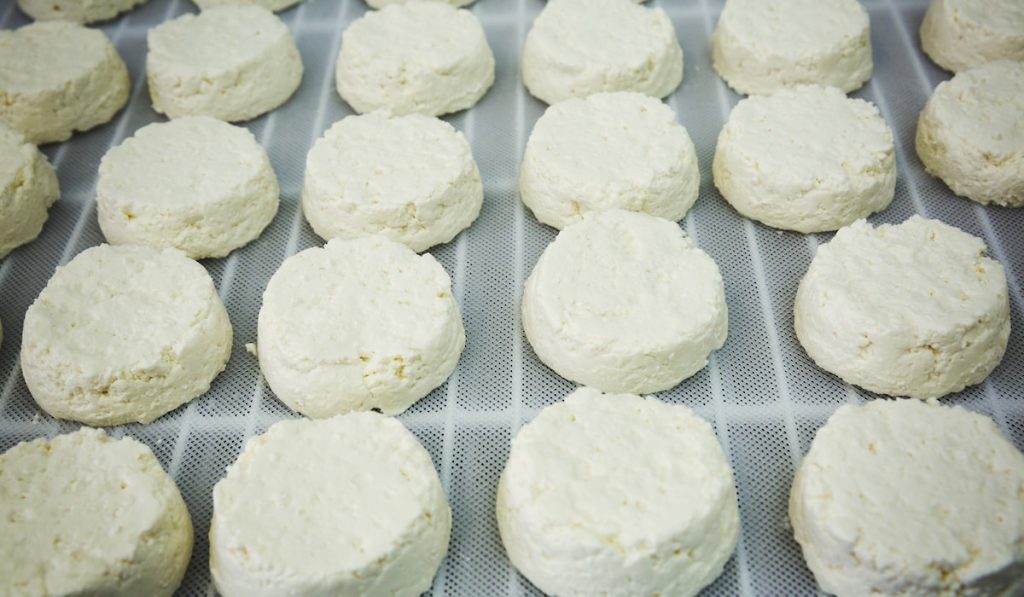
How to Make Goat Cheese Paleo Friendly
Before we move on, let’s quickly review a few paleo diet rules.
To be paleo, a food must:
- Be unprocessed
- Be sugar-free
- Not come from grains or legumes
- Not contain gluten
- Not contain dairy
It’s a plus if the food is locally sourced, organic, and grass-fed.
Now, let’s see how goat cheese stacks up!
As we know, goat cheese is made from milk. Milk is a dairy product, so it breaks an important paleo rule. And if your goat cheese is processed, has added sugar or flavors, or comes from industrially raised goats, it will break even more paleo rules.
But we also know that paleo is not a black-and-white diet. There’s a lot of room for interpretation, and you can adapt the diet to fit your own needs and preferences.
So, if you want, you can include goat cheese in your paleo diet by sticking to a few simple rules when choosing and eating it.
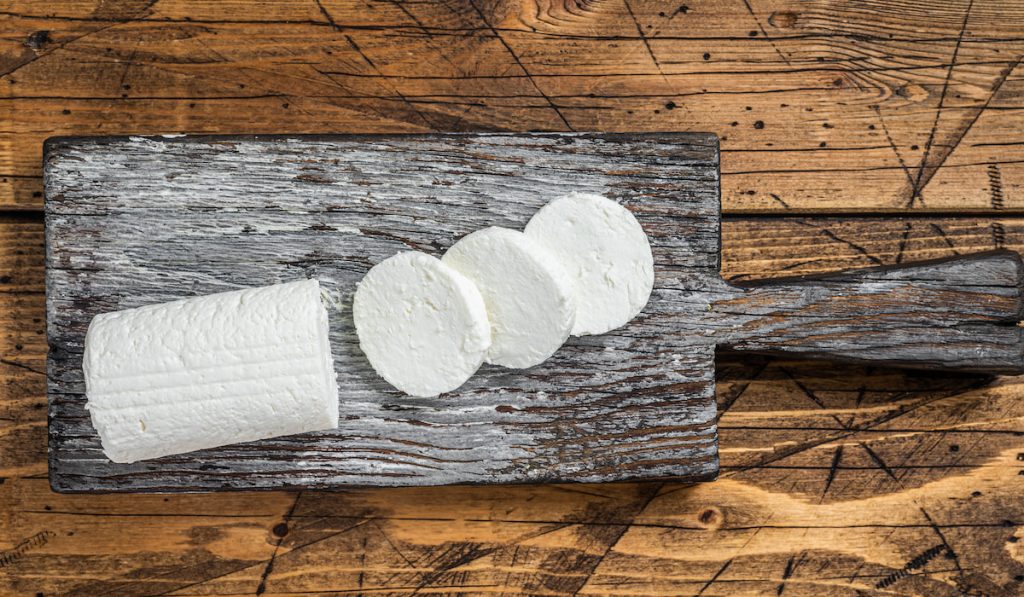
7 Tips for Making Sure Your Goat Cheese is Paleo Friendly
If you do want to include goat cheese in your paleo diet, here are a few tips to make sure it’s as paleo-friendly as possible:
1. Always Check the Fine Print
This should be a rule for all the food you eat, not just goat cheese.
Always check the ingredient list and nutrition facts label when you buy packaged food. This will help you ensure the food is unprocessed and doesn’t have any added sugar or other unwanted ingredients.
In the case of goat cheese, one important point to remember is it should not contain any other type of milk.
Some commercial goat cheese may include sheep or cow milk, so double-check for that.
2. Buy Locally
Paleo is all about eating what is available to us locally.
This is easier said than done, but finding local farms where you can source your food is worth the effort. This way, you’ll know exactly how the food was raised and processed, and you’ll be supporting your local economy.
3. Get Cheese from Pasture-Raised or Grass-fed Goats

This is the gold standard for goat cheese (or any other animal products).
Pasture-raised animals are allowed to roam freely and graze on grass and other plants packed with nutrients. Typically, they are not given growth hormones or antibiotics.
Buying pasture-raised products is a great way to reduce exposure to toxins and eat the healthiest food possible.
4. Buy Full Fat
This may seem counterintuitive if you’re trying to lose weight, but full-fat dairy is actually more satiating and can help you eat less overall.
So it’ll help you limit your dairy portions and stick to your goals.
5. Avoid Flavorings
Goat cheese is delicious on its own, so there’s no need to add any extra flavors. But if you do want to add some flavor to your goat cheese, stick to paleo-friendly ingredients like herbs, spices, and lemon juice.
6. Stick to Small Portions
Even if you’re following all of the above tips, it’s still important that your dairy portion doesn’t make up the majority of your meal. So, pair your goat cheese with other nutrient-rich paleo-friendly foods like vegetables, fruits, and proteins.
7. Make Your Own Goat Cheese
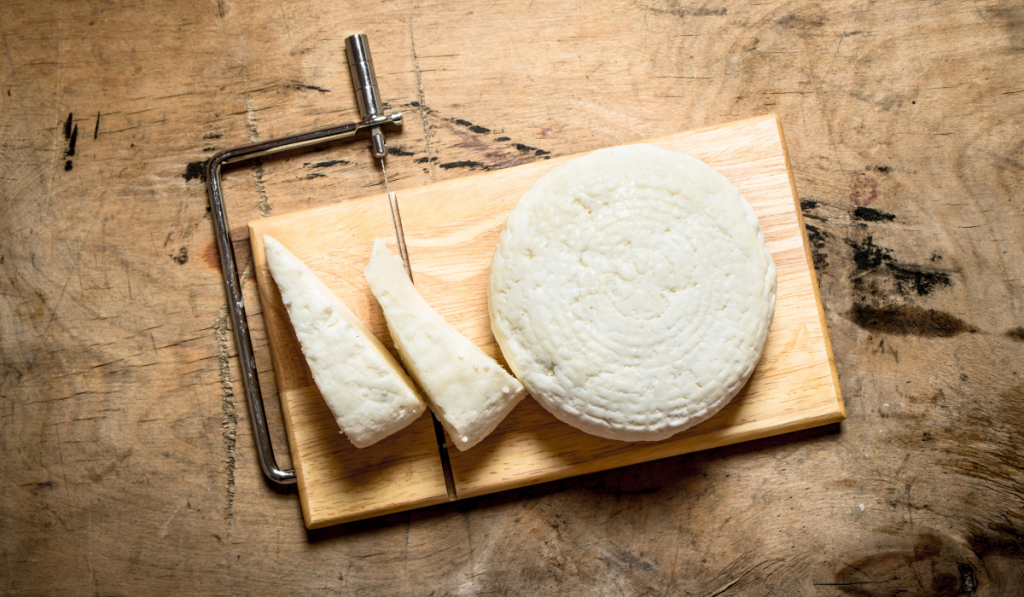
The best way to make sure your goat cheese is paleo-friendly is to make it yourself. This way, you’ll know exactly what ingredients are going into your cheese, and you can customize it to your own taste.
Making your own goat cheese is actually pretty easy. All you need is some raw goat milk and an acid (like lemon juice or vinegar). If you want to get fancy, you can also add some flavors like salt, herbs, or spices.
Important Point—Avoid Goat Cheese If You’re Dairy Sensitive
Goat cheeses are low in lactose and casein, but they still have small amounts of both. If you’re sensitive to these proteins, you may want to avoid goat cheese or look for a brand that is specifically labeled as “lactose-free” or “casein-free.”
Bottom Line
Goat cheese may not be traditional paleo, but it can be a part of a healthy paleo diet. When you include goat cheese in the paleo routine, you get the added benefit of getting more vitamins, minerals, and nutrients without consuming cholesterol, casein, and lactose.
If you want to include goat cheese in your paleo diet, go ahead. Just make sure you’re getting it from a reputable source and that it fits into your overall paleo lifestyle.
Resources
- https://www.stylecraze.com/articles/health-benefits-of-goat-cheese/
- https://www.masterclass.com/articles/goat-milk-cheese-vs-cow-milk-cheese#3-cheeses-made-with-either-cows-or-goats-milk
- https://www.prevention.com/food-nutrition/healthy-eating/a20447024/goat-cheese/
- https://www.gettingoldandfit.com/goat-cheese-paleo-friendly/
- https://www.reference.com/world-view/goat-cheese-permitted-paleo-diet
- https://irenamacri.com/paleo-diet-food-list/
- http://thepaleolist.com/2013/08/08/is-goat-cheese-paleo/

